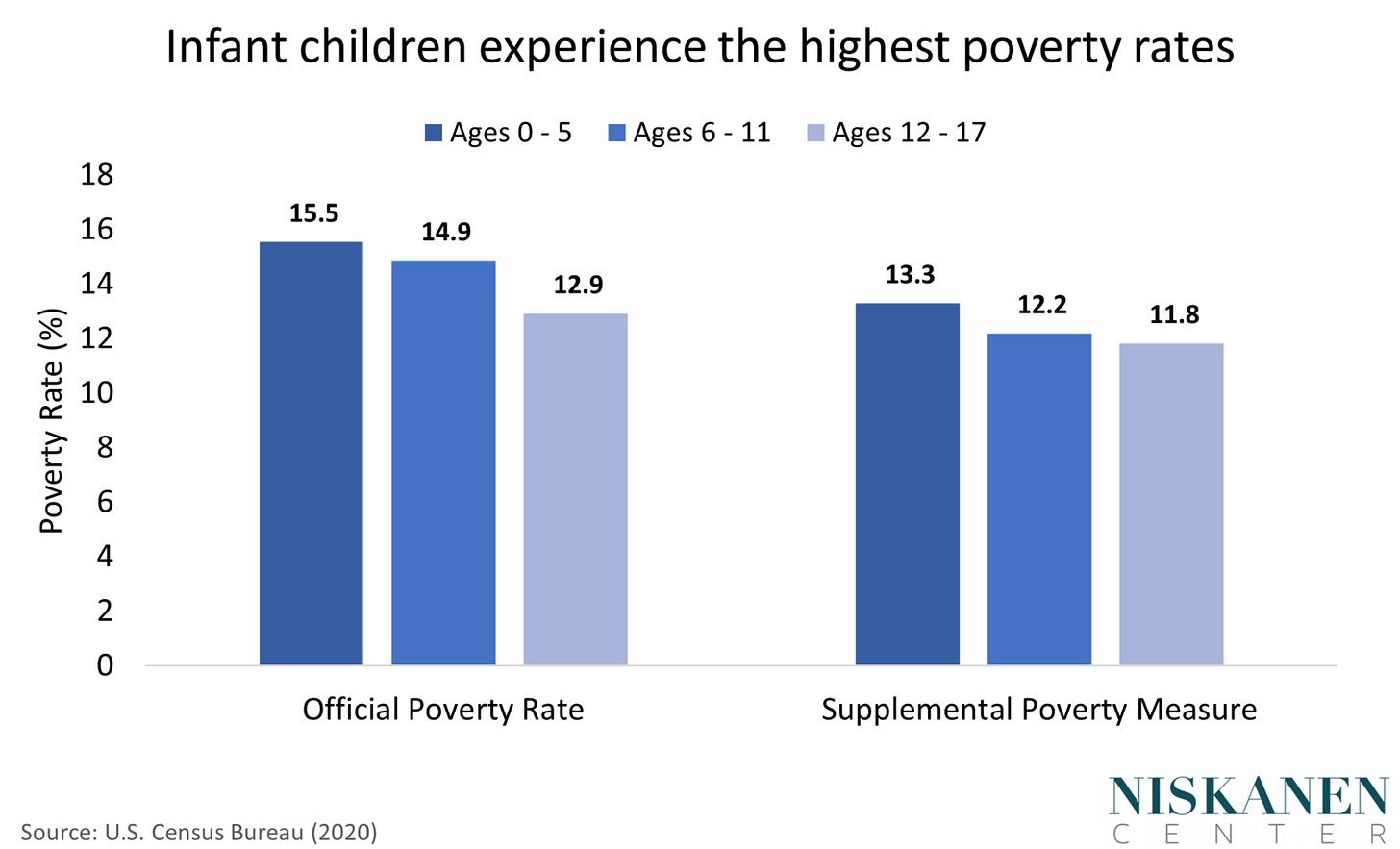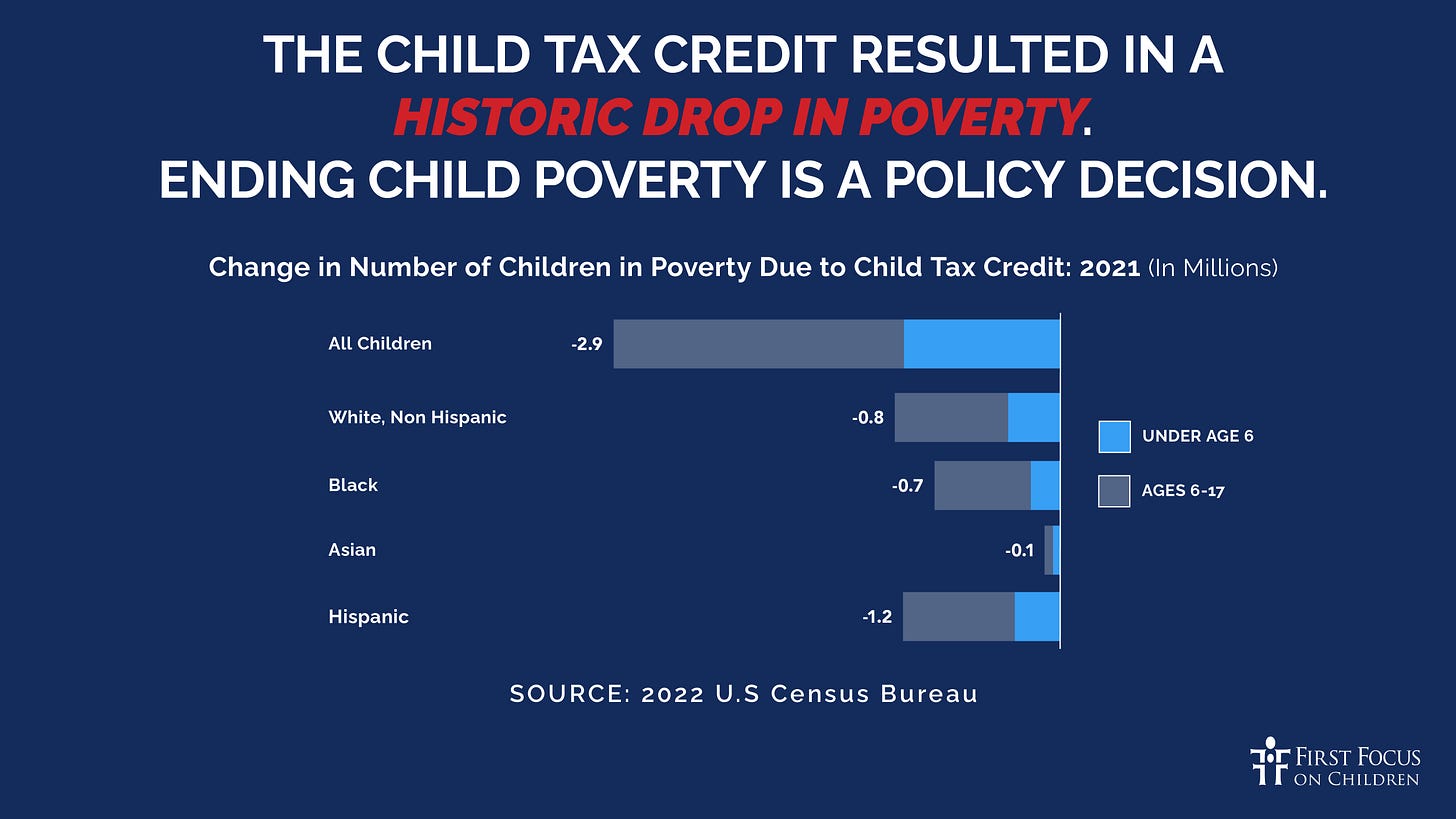Elections are supposed to be about the future direction of the nation, but the media seems entirely focused on whether Joe Biden and Donald Trump are too old for the job. For most families with children, their top priority is about the well-being and future of their children. What matters to them is their public schools, early childhood education, child care, child health, the Child Tax Credit, child hunger, housing costs, after-school and summer program options, and being able to provide what is best for their kids.
Over the remaining 111 days of this campaign, we will attempt to raise these questions of importance to children and families and call on the media to compare and contrast the solutions proposed not only by the Biden and Trump campaigns but all the candidates in Senate and House races, and highlight possible solutions that would be meaningful to children and families. On social media, we will be using the hashtag #VoteKids when we post about these issues.
As a leading example, child poverty is a policy decision that should scar our national conscience and be a top priority of our nation’s leaders. The Preamble to the Declaration of Independence declared:
We hold these truths to be self-evident, that all men are created equal…
At birth, this principle demands that every child, regardless of their background, should be treated with equal respect and dignity. It underscores the importance of non-discrimination and equality of opportunity.
Unfortunately, child poverty is opportunity-crushing, as it negatively impacts every aspect of the lives of children. Consequently, as a nation, we should strive to lift all children out of poverty and hold our elected officials accountable for enacting policies that help reduce child poverty in this nation.
Although there may be disagreement as to how to reduce child poverty, at the very least, we should all be able to agree that it should never be the policy of government to increase child poverty.
The Preamble to the Declaration of Independence adds:
…that they are endowed by their Creator with certain unalienable Rights, that among these are Life, Liberty and the pursuit of Happiness.
This phrase affirms that all people, including children, have fundamental rights that cannot be taken away. For children, this includes rights to safety, education, health care, and the freedom to grow and develop in a nurturing environment. It implies that society has a responsibility to ensure that these rights are protected and upheld for all children, regardless of their race, ethnicity, disability status, gender, zip code, etc.
Child poverty in America is a sad reality that threatens the opportunities of children and demands urgent action. Despite being one of the wealthiest nations globally, the United States struggles with an unacceptable rate of child poverty, as 1-in-5 children live in poverty. This statistic should not only shock the national conscience but spur us into action. It’s time to:
Establish a national child poverty target, a concrete goal to reduce and eventually eliminate child poverty in the United States; and,
Demand that our policymakers put forth a plan to significantly cut child poverty in this country, just as we have successfully done for our nation’s senior citizens.
The Moral and Economic Imperatives of Cutting Child Poverty
Again, child poverty should scar our national conscience. Every day, millions of children in our country go to bed hungry, lack proper health care, and miss out on the quality education they need to thrive. The highest rates of poverty in this country are among our kids and particularly among our babies and toddlers.
These children are not just statistics; they are the future of our nation. Investing in our children is investing in America. When we help children grow and succeed, we are paving the way for our country’s next generation of workers and leaders.
Fortunately, we have a path. In its landmark report in 2019 entitled A Roadmap to Reducing Child Poverty, the National Academy of Sciences, Engineering, and Medicine (NASEM) presented a series of options to cut child poverty by more than half. The study found that cutting child poverty is critically important to improving the lives of children, but that it is also in the interest of all of us. NASEM estimates that child poverty is costing our nation up to $1.1 trillion annually.
A Proven Approach
Successfully cutting child poverty by half isn’t an untested concept. First, the United States achieved it in 2021, as child poverty was cut to a record low 5.2% due to policies adopted as part of the American Rescue Plan Act (ARPA). Unfortunately, child poverty increased to 12.4% in 2022 when those policies expired.
Furthermore, other wealthy countries like the United Kingdom (UK) and Canada have made significant strides in reducing child poverty by setting clear, measurable targets and implementing policies to achieve them. Cutting child poverty is a matter of making a real and tangible commitment to kids.
A national child poverty target would provide a clear, measurable goal for which policymakers should strive. It would signal a commitment to addressing child poverty and ensure that progress can be tracked and accountability maintained. This target would serve as a constant reminder that the well-being of our children must be a priority.
While the policy approach in the United States might be different, we should set ourselves on a path and hold our elected officials accountable for developing and implementing a plan to achieve such a goal. It is critical to the future of our nation.
Sens. Bob Casey (D-PA), Sherrod Brown (D-OH), and Tammy Baldwin (D-WI) and Reps. Danny Davis (D-IL), Barbara Lee (D-CA), Sara Jacobs (D-CA), and Gerry Connolly (D-CA) have taken an important step by introducing S. 2906/H.R. 5629, the Child Poverty Reduction Act.
This legislation establishes the goal of cutting child poverty by half over five years, has the support of over 100 organizations, and should be adopted by Congress and all candidates for public office.
Policy Measures to Achieve the Target
1. Strengthening the Social Safety Net
The social safety net is the foundation of any strategy to combat child poverty. Programs like the Supplemental Nutrition Assistance Program (SNAP), Temporary Assistance for Needy Families (TANF), and Medicaid play a crucial role in supporting low-income families. Improving these programs and ensuring they are adequately funded is essential.
2. Enhancing the Child Tax Credit
The Child Tax Credit (CTC) has proven to be one of the most effective tools in reducing child poverty. ARPA temporarily expanded the CTC and successfully lifted an estimated 3 million children out of poverty. Making these expansions permanent and increasing the credit amount would have a profound impact on reducing child poverty rates.
3. Affordable Childcare and Early Education
Access to affordable, high-quality childcare and early education is critical for both children and their parents. Ensuring that all children have access to preschool and that childcare costs are manageable for families can help lift families out of poverty and set children on a path to success.
Economic Benefits of Reducing Child Poverty
Investing in our children is not only a moral imperative but also an economic one. When we help children grow and succeed, we are paving the way for our country’s next generation of workers and leaders. Again, NASEM estimated that child poverty costs the U.S. economy up to $1.1 trillion annually due to lost productivity, higher crime rates, and increased healthcare costs. Reducing child poverty would lead to a more educated, healthier, and more productive workforce, benefiting the economy as a whole.
Community and Family Support
1. Supporting Families
Investing in our children means recognizing that children learn the values of respect and responsibility in strong families and safe communities. This includes helping parents in low-income communities protect their children from poverty, violence, and drugs, providing mentors and role models so all our nation’s teenagers finish high school, and caring for the millions of children who are abused and neglected, so every child stands a chance of having a satisfying, productive life.
2. Protecting Health, Nutrition, and Safety
When it comes to America’s children, it’s time to get back to basics. That means protecting their health and safety, shielding them from harsh economic times, and helping them develop their God-given potential. America should be at the top of the list of industrialized nations in the health and safety of its children, not at the bottom. This starts with ensuring every woman has prenatal care and every child has a doctor. No child in this country should ever go hungry.
Educational Equity
1. Early Education
Getting back to basics means our kids should have the top math and reading scores in the world, not be competing for number 30. This requires fully funding our nation’s public schools, encouraging parents to get more actively involved in their kids’ education, raising the quality and pay of teachers, and leading the world again in college graduates.
2. Postsecondary Opportunities
Investing in our children means making sure every teenager who aspires to a college education and is willing to work for it can afford one. This could involve increasing financial aid, reducing tuition costs, and providing support services to ensure students not only attend college but graduate.
Economic Stability
American families should be working their way into the middle class, not falling out of it. Yet today, many families are living month to month, hoping their car doesn’t break down because they have no idea where they’d find the money to fix it. The millions of Americans out of work are real people facing real hardships. Ensuring economic stability for families is crucial to reducing child poverty.
1. Improving Wages
We don’t have a shortage of work ethic in this country; we have a shortage of work that adequately pays workers what is necessary to ensure they can provide for their families. The minimum wage in this country desperately needs to be raised (and no, the solution is not more child labor, as is being proposed in a shocking number of states).
2. Fair Taxation
It's time our tax code reflected the interests of American families, not special interests and their lobbyists. It used to be that big corporations pulled their own weight. Corporate taxes once accounted for 40 percent of federal revenues. Now they’re just 7 percent, and the majority of companies doing business in this country, including foreign corporations, are paying no federal taxes at all. Over the past few decades, tax policy has dramatically increased income and wealth inequality. To address this, we must focus on creating a more equitable tax system. Policies such as the Child Tax Credit (CTC) and the Child and Dependent Care Tax Credit (CDCTC) should be expanded and made more accessible to low- and middle-income families. This change can help ensure that all families, regardless of income, have the resources they need to support their children.
3. Stable and Reliable Child and Family Tax Credit
Additionally, the "roller coaster" approach to child tax credits, as highlighted by Eugene Steuerle and Cary Lou with the Tax Policy Center, creates instability for children and families who rely on these fair and equitable tax policies. Eliminating the unfairness and uncertainty surrounding child tax credits and ensuring they are permanently available would provide families with the consistency they need to plan for their children. A reliable tax policy would not only help reduce child poverty but also promote long-term economic stability for families across the nation.
As a study by the Center on Poverty and Social Policy at Columbia University points out, society also benefits. The authors explain:
We find that child allowances are a winning investment in our children’s future mobility. While the initial costs may appear large, they are small compared to the very large monetary benefits that would eventually accrue to recipients and society from investing in children. The value to society that flows from these impacts is approximately ten times the annual costs: converting the Child Tax Credit to a child allowance would cost about $100 billion and would generate about $1 trillion, or about $10 for every dollar spent in benefits to society.
Public policy should seek to improve opportunity for all children and no longer leave millions of children behind and in poverty, as current tax policy does.
Furthermore, as others have said, tax policy should also treat child care as a business expense because, quite frankly, for people with children it is part of the cost of working.
Conclusion
When nearly half of Americans no longer believe that the American Dream is attainable, it’s time to reclaim this spirit. Our parents and grandparents knew that if they worked hard and played by the rules, their kids could expect a shot at a home, a college education, and the opportunity to develop their gifts to the best of their abilities. But in the last few decades, the middle class has been shrinking as CEO salaries and bonuses have skyrocketed. A tragic number of kids are born into poverty, and working and middle-class Americans are finding housing costs to be insurmountable.
America has often risen to the challenge of ensuring a brighter future for our children and families. It’s time we rise to that challenge again.
Setting a national child poverty target is the first step in that direction. It will require dedication, investment, and a collective will to put our children first. But the payoff — a healthier, more prosperous future for all Americans — is well worth the effort. Let’s make the commitment today to end child poverty and secure the future our children deserve.
If you would like to help ensure that children and their needs, concerns, and best interests are no longer ignored by policymakers, please join First Focus Campaign for Children as an “Ambassador for Children” or become a paid subscriber to help us continue our work. We do not have dedicated financial support for this work and rely on readers like yourself to support it. Thank you for your consideration.








